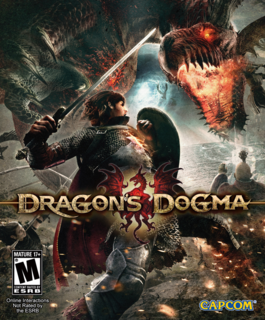INTRO:
Capcom knew that it has hit a new gold mine with Dragon’s Dogma, but it has perhaps rushed in too fast to mine it. Released during the time when it had (and perhaps still has) some onerous habits about cranking out (over-)priced DLC packages, Dragon’s Dogma was as much loathed for the things around its fringes as much as it was praised for the things at its core.
Dark Arisen for the computer platform was made to make good on Capcom’s mistakes. The expansion is included together with the base game and the ancillary DLC packages in this offering. The expansion introduces features that make more use of previously underused things to implement more goodies for the player to pursue. Unfortunately, some bad design decisions have remained, and additional ones have also been made.
(Note: this article was parked under the PS4 version of Dark Arisen, if only because the PC version is only ever represented by the expansion in GameSpot's listing system.)
PREMISE:
A new storyline was made for the expansion; its title is very much a give-away of what the core of this storyline is. The storyline makes use of conveniently magical reality- and time-bending excuses to have it run parallel to the protagonist’s overarching quest, while also filling gaps in the lore. In particular, the expansion reveals more about the pawns’ nature, and the consequences of the choices of Arisen who resent their turn of fate.
To inform the player of the opportunity to pursue this storyline, the player is shown a cutscene after returning to Cassardis after a certain milestone in the main storyline. Presumably, after this milestone, the player character and his/her Pawns are expected to be strong enough to handle the first few challenges that are posed by the expansion. The later ones, though, take a lot more grinding effort, or some fast thinking (as in thinking about where to run).
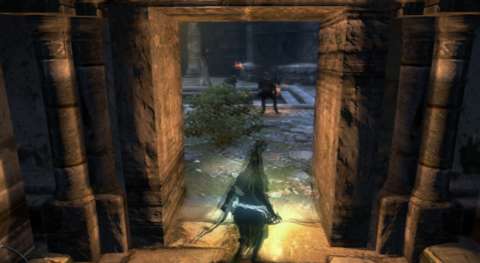
BITTERBLACK ISLE:
The peculiarly named Bitterblack Isle is the location for the expansion. It is a vertical game world, utilizing plenty of dungeon floors to pad out its gameplay content.
The starting area of the isle is practically the hub zone. There are a number of initially blocked pathways to deeper dungeon floors; these have to be opened by reaching those floors and finding the other ends of the pathways. Following them to the starting area usually ends in some means to remove the blockage.
PLENTY OF VERTICALITY:
A few jaunts into the places in the Isle reveals that there is a lot of verticality to the dungeon designs, more so than those in the base game. There are corridors, stairs and ledges on paths that eventually loop around to other points in the same map, so the player might want to look up, down and around to spot any alternate paths. Coincidentally, this is a good way to escape from enemies, though the Pawns might not always be able to keep up if the player found paths that they were not scripted to handle.
LIMITED FAST TRAVEL:
The main gameplay limitation about the exploration of Bitterblack Isle is that Ferrystones are rendered useless here, with the exception of the starting area. This can be unpleasant, because this might require the player to adopt playstyles that are more common to players of the Souls series, namely running past enemies that would otherwise sap the team’s strength if the player fought them.
However, the player’s Pawns may not be able to keep up, due to their lousy path-finding. They might get slowed down and get attacked, taking damage that the player has to deal with later to avoid attrition.
Fortunately, respawn times for already-defeated powerful enemies (especially those whose hitpoints appear at the top of the screen) are long. By the time that the player makes a round-trip, they might still be dead.
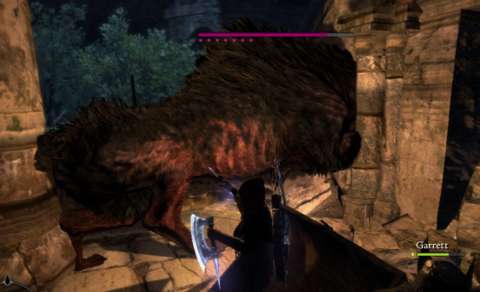
There is still one method of instantaneous travel: that is the Liftstone. This can only be used in any dungeon in Bitterblack Isle; when it is used, it brings the player back to the Portcrystal ring on the surface. However, there is no way to return to where the player used the Liftstone, other than on foot. Each Liftstone is also of considerable cost, though it is a common loot drop in Bitterblack Isle.
Considering the improvements to the fast travel system in the base game, this throwback to the harsher original form of the system can appear unseemly to players who believe that backtracking should be eliminated. On the other hand, it is also likely intended to ameliorate the proponents of “building character” who were not pleased with the introduction of the conveniences in the base game.
Backtracking across the well-bounded environments in Bitterblack Isle is also much easier than backtracking through Gransys in the base game. Besides, there are the aforementioned alternate paths, which the player can use to bypass certain enemy groups.
MORE USES FOR RIFT CRYSTALS:
There are more uses for Rift Crystals in the expansion, though these are only available on Bitterblack Isle. The most noticeable of their uses is purification of Bitterblack items, which will be described shortly. The player will also spend Crystals to restore (the curiously) cracked Riftstones on the Isle. Finally, Crystals are also needed to upgrade already Dragon-forged items.
Indeed, the player will be spending a lot of Crystals. The player might want to pursue quests that grant them, such as the (both famous and infamous) Badge-finding quests.
BITTERBLACK ITEMS & PURIFICATION:
The main draw of the Dark Arisen content is the gamut of magic-polluted knick-knacks that can be found throughout the Isle. These are often found in out-of-the-way chests, and some are dropped by defeated monsters. The player can bring these over to Olra, a mysterious amnesiac lady who somehow knows how to remove the shadowy gunk that is preventing the knick-knacks from being used. Olra does that for free – as in not taking fees in gold – but she requires Rift Crystals to clean them.
Bitterblack items have level ratings that indicate how powerful they would be when they are purified. Expectedly, the cost in Rift Crystals is higher for higher-level items. However, the level ratings do not determine what is revealed when Bitterblack artifacts are purified; rather, the type of items that they turn out to be is determined by the type of the Bitterblack artifacts. For example, Bitterblack Armor artifacts will be purified into pieces of armor. However, the exact item that is revealed is randomized.
The results of the purification process can be weapons and armor, even though they might be visibly bigger than the models for the gunked-up things. These weapons and armor can be those that have been introduced through DLC packages for the original version of the game. Thus, this saves the player some gold, which the player is likely to use to upgrade the gear that has been found anyway.
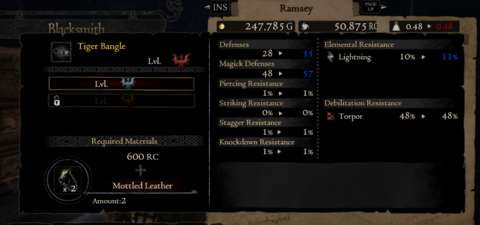
Alternatively, they may be the new ones that are introduced for the sake of the challenges in the Dark Arisen content; the higher-level Bitterblack items are very likely to give these. These are the ones that the player will want because they are far more powerful than anything that came before.
Unscrupulous players can indeed attempt to save-scum the purification process, repeatedly force-closing the game and reloading it to re-attempt the process. These players would also need to consult the wiki on the yields of the Bitterblack items. Of course, this can be terribly immersion-breaking.
THIRD-TIER SKILLS & JEWELLERY:
Among the items that are produced from purification are rings that give small bonuses to some statistics, but whose primary appeal is another level of upgrade for the already-upgraded versions of skills and spells. This means that a character has to forgo one jewelry slot for one of these rings. However, the upgrade is often worth so much more than the opportunity cost.
For example, there are rings that upgrade High magic spells into Grand ones. Grand spells are typically more powerful and more impressive to look at; they also tend to cost less stamina to use, which already makes the upgrade more than worthwhile.
In the case of dagger-based skills that are enhanced with jewelry, their animations tend to be greatly accelerated. This might require the player to readjust his/her timing with them, if he/she intends to cancel out of these moves.
BARROCH:
Olra is one of the (still-)human characters on Bitterblack Isle, but she is an amnesiac and does not have much to tell until after much later. She will not venture beyond the surface of the Isle (and the jetty at Cassardis), because her mind is just too hazy to do so.
Barroch is another (still-)human character, who happens to be a lot more dynamic than Olra. He would eventually reveal that he is an Arisen, meaning that he was and perhaps still is human, albeit teetering on the edge of sanity. To maintain his sanity, he has busied himself with the profession that he had prior to becoming an Arisen. Conveniently, that profession is that of a scholarly researcher, especially in crafting things. Barroch is also a stash-managing NPC, and also allows the player to have characters learn or set skills. (Changing vocations has to be done through Olra, though.)
All these services come at the price of having to deal with Barroch’s sometimes-creepy eccentricity, and his tendency to change his location often.
“RARIFICATION”:
Bitterblack Isle being the place it is, it has many materials and ingredients that are endemic to it; the player will find these, by the way. In addition to being able to perform the regular weapon upgrades, Barroch has learned how to use these to upgrade already Dragon-forged weapons and armor (but he does not know how to perform Dragon-forging himself; that still requires the defeat of a dragon).
(Upgrading Dragon-forged items is called “rarification” in-game, following the developer’s design policy of putting a different name on even mundane video game things.)
These upgrades will be necessary, due to the considerable hitpoint reserves and defense ratings that Bitterblack Isle monsters have.
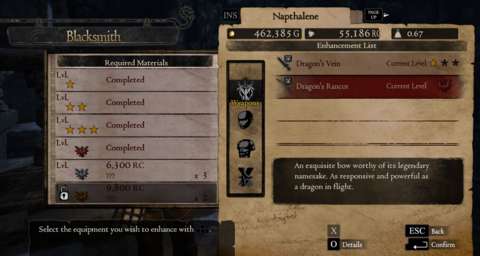
NEW ENEMIES:
Speaking of which, there are many new enemies that appear to be exclusive to Bitterblack Isle. The narrative reason for this is that the Isle seems to imprison them there; the Arisen and his/her team appear to be the only ones that are able to come and go as they please, as long as they reach the starting area.
Anyway, these enemies are substantially tougher and nastier than those in the base game. In fact, the first combat encounter is likely to be unpleasant: a pack of agile Wargs that are scripted to dodge just about any attacks that they can see coming.
Like the enemies in the base game, they have statistical weaknesses and deficiencies in their behavioral scripting that can be exploited. An example is shown in one of the screenshots that are included in this review article.
However, an uncomfortable number of them are considerably tough, often taking a long time and possibly a lot of valuable resources to defeat. There will be more elaboration later.
CORPSES & ATTRACTING CARRION-EATERS:
Observant players might notice that enemies that die in Bitterblack Isle are quickly reduced to gore. This is not just for aesthetics.
The game tracks the number of gore piles in an area. If it reaches an unseen critical number, a carrion-eating monster will spawn into the area; this is signaled through a brief slow-down of the game, a sudden loss of colour from the screen and the playing of a music track with tones of desperation.
It may occur off-screen. In this case, returning to the scene reveals the presence of the carrion-eater, which would be busying itself with eating the gore. Obviously, disturbing their meal angers them.
If the mayhem of an ongoing battle was particularly bloody, a carrion-eater might even join the battle halfway through by appearing from thin air. This can be unpleasant for both the player and enemies that the player has been engaging.
Despite their preference for carrion, carrion-eaters are powerful monsters. In fact, they are some of the nastiest enemies in the game.
DAMAGE SPONGES:
The expansion has an in-game warning that the different enemies that the player would encounter in Bitterblack Isle are the toughest that the player would fight in Dragon’s Dogma. Unfortunately, they are also the most tedious to fight.

The primary cause of the tedium of fighting them is their considerable defense and magick defense ratings. These are high enough such that almost any weapon or spell in the base game does not hurt them much, even if they have been Dragon-forged to the first-rating.
They can take a long while to go down, even after the player has figured out their weaknesses or bad habits and have learned how to exploit them. Of course, they can still be taken down quickly, but only after the player has developed very powerful characters and amassed potent resources like damage-buffing items. That would involve a lot of effort that only die-hard fans would be willing to expend.
Incidentally, all of the carrion-eating monsters are damage sponges. They are optional combat encounters, of course, so sometimes, the wiser choice is to simply run away.
Not all encounters with damage sponges are forced on the player. In a rare expression of clever level design, there is one scene where a gargantuan armored cyclops is chained to a sheer wall; it is initially quiescent. The player’s Pawns would remark that it is best left alone; indeed, angering it without a plan to deal with it results in disaster.
There are also lesser enemies that also happen to be damage sponges, such as Banshees (which are tougher female zombies with the namesake ability to scream very loudly). Again, the player character could just run past these, though they might go on pursuit.
MANDATORY DAMAGE SPONGE BOSSES:
Unfortunately, some of the mandatory bosses that bar progression through the Isle are damage sponges. Of course, the player could do some research to figure out the best ways to fight them. Yet, ultimately, the best ways often require a lot of grinding and farming.
For example, one of the mandatory bosses, the Dark Bishop, is best fought with Silence-inducing weapons, but that would require the player to keep re-rolling pawns until he/she gets one that cast silence spells, or the player has to farm lots of Silencer arrows, or the player has to find and upgrade Golden weapons. This demands a lot of effort, perhaps to the point that only die-hard fans of Dragon’s Dogma would pursue them wholeheartedly.
Of course, there is the counter-argument that the presence of these damage-sponges are a sign that the player should look for the Bitterblack weapons, which are far more powerful than anything in the base game. However, these are randomized drops; even if the player knows where to look, the player might not have the good luck of getting a Bitterblack Weapon artifact early on.
CURSED DRAGONS:
These are perhaps the monsters that the player would covet and dread the most. Their hunger having debased them, these dragons are no longer sapient. One noticeable disadvantage that they have is that they cannot force pawns into their service.
On the other hand, this means that they are wholly committed to killing the player’s party. They hit much harder than most other dragons of the same size, and they are also damage sponges.
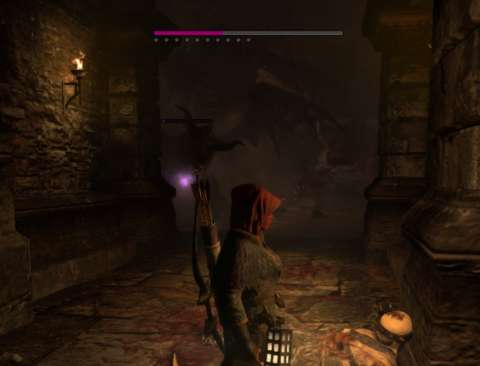
One of the very few reasons that the player might want to fight them is that they offer the best chances for Dragon-forging among the dragon-forms (discounting the titular Dragon and the on-line Ur-Dragon). Yet, bad luck can mean that all the player’s effort would go down the drain.
DEATH:
For reasons that are likely to be about gratuitousness, Dark Arisen has a take on the Grim Reaper. There is a large ghastly ghost that wields a massive scythe, and it has a habit of coalescing into existence in seemingly random places. (There are a few locations where Death is guaranteed to appear, for better or worse).
It has very few attacks, but all of them are problematic for the player. Firstly, there is its scythe-swing, which has a long wind-up and is meant to be dodged. If the player does not heed the warning, the scythe-swing outright kills almost anyone caught in its path. This includes other enemies too, but it is difficult to lure it into another enemy.
Secondly, there is its lantern, which acts a lot like the Evil Eye’s glare, except that Death can move about while shining the lantern at things. Getting caught in the lantern’s light puts one to sleep, which is bad if Death has caught up to them.
Death is a large target, but it also happens to be one of those damage sponges. Death also happens to be a creature that is attracted to scenes of carnage, so it could appear at unpleasant times.
Like the offline Ur-Dragon, it has scripts that causes it to retain its hitpoints from encounter to encounter, meaning that the player could chip away at its health and eventually defeat it. It will return, of course, but not for a long while.
LURE ITEMS:
The player eventually obtains “tool” items that are practically pieces of putrid gore. These are used to force the spawning of carrion-eating monsters in Bitterblack Isle. Most of the time, if the player’s party is within view, these monsters become immediately aware of their presence and will pursue them. This can be very bad if the player has not prepared well. Nonetheless, lures are reliable ways to grind and farm these monsters for their loot and other rewards, though getting a tidy profit from them might be another matter.
The type of monster spawned is dependent on the map that the lure is placed in. There are some maps on Bitterblack Isle that do not have scripts that spawn a monster when a lure is used. Other than learning this from the wiki for the game, the player can learn it by observing the scripted appearances of the carrion-eaters; more often than not, an area with these scripts will spawn these things.
The Fiend-luring Incense is another type of lure. It is exclusively used in the Rotunda of Dread and the Black Abbey. These two places spawn different combinations of monsters each time the player enters them; without the lure item, these tend to be powerful monsters from the base game. Somehow, having the incense causes enemies that are endemic to the Isle to spawn instead. The player can then fight and defeat them for loot and glory, if the player can handle the combinations.

CORRUPTED PAWNS:
Eventually, the player will come across terribly confused and very hostile Pawns. The player’s Arisen cannot bind them to his/her will; rather, they will attack, all the while muttering confused statements about their loyalty to the Arisen.
Some of these Pawns happen to have vocations that the player’s Pawns cannot pursue, namely the hybrid vocations. Fighting them can be a daunting proposition, especially if the player has yet to become familiar with what the hybrid classes can do.
VISUAL DESIGNS:
Bitterblack Isle is a gloomy place. Its surface is almost always lit by the moon, suggesting that it is a place stuck in time. Most of its dungeons appear to be the ruins of a formerly prosperous place, albeit now taken over by the wild. Speaking of the wild, not all living things there are monstrous; there are deer, rabbits and crows in some places.
Most of the new enemies are variants of the ones found in the base game, so the player should not expect them to look or move differently. Nonetheless, they do look more menacing (and diseased).
As mentioned earlier, defeated enemies turn quickly into piles of gore. This abrupt transition is masked by some vaporous particle effects and the models of their corpses sinking into the ground, not unlike how large climbable monsters quickly dissolve into large cadaverous bones. This can seem a bit silly at times, at least until carrion-eaters appear.
REUSED LEVELS:
After the first stretch down into the depths of the Isle to get the first “Void Key”, the player unlocks another stretch of the isle. Unfortunately, the player might notice that the designs for some environments that have been traversed earlier have been reused in the next stretch. The level designers may have everything about them made a little darker, smokier and made ceilings to block out moonlight, but closer examination would reveal that they have the same architectural layout.
SOUND DESIGNS:
Most of the music tracks that are introduced in Dark Arisen sound ominous, which is perhaps fitting as Bitterblack Isle is as foreboding as its name suggests. The most notable of these tracks is the one that plays whenever one of the dreaded carrion-eaters spawns into the current map; this is the player’s cue to either run away and exit the map, or start looking at preparations within the player’s inventory if he/she intends to make a stand.
There are almost no new sound effects, mainly because most of the ones heard in Bitterblack Isle are recycled from those in the base game. That many of the “new” monsters are based on the ones in the base-game conveniently accommodated the recycling. As for the few new sound effects there are, there is the unique audio clip that plays whenever the player finds Bitterblack artifacts, and the grisly sounds of the carrion-eaters chowing down on their preferred diet.
CONCLUSION:
Dark Arisen reveals more about the lore behind the decision that awaits each Arisen, and the not-entirely immutable nature of the loyal Pawns. There is a new place to explore, and more challenging combat encounters to overcome. There are more rewards too, which are mostly commensurate with the level of challenge posed by the expansion.
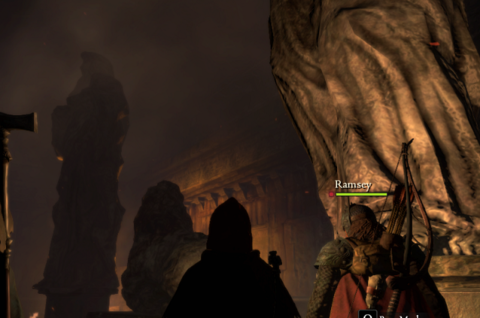
On the other hand, the regressed version of a fast travel system for Bitterblack Isle can be stifling. The use of sometimes-lazy designs that turn some monsters into damage sponges do not make the expansion as thoroughly enjoyable as it should be. Many monsters happen to be variants of monsters that are already in the base game. The rewards also come with preconditions, namely the need to have already Dragon-forged gear, which in turn further highlights the luck-dependent system that is used for Dragon-forging.
It can seem a bit disappointing that Dark Arisen has introduced almost as many sources of frustration as it did sources of glee. Consequently, Dark Arisen is strictly only for fans who just could not get enough of Dragon’s Dogma.
